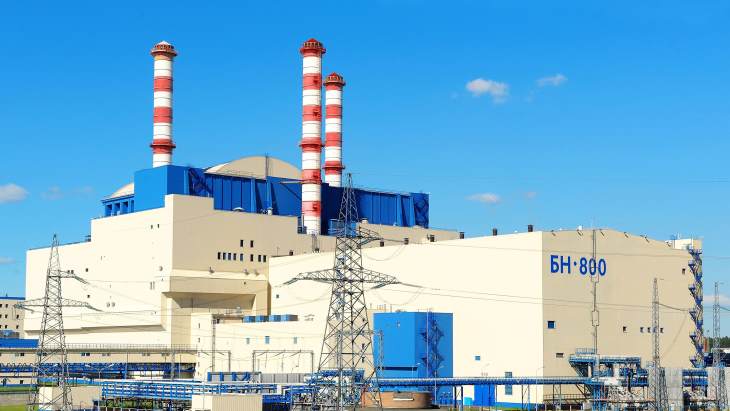
OSART missions aim to improve operational safety by objectively assessing safety performance using the IAEA's Safety Standards and proposing recommendations for improvement where appropriate.
A team comprising experts from Armenia, Belarus, China, France, Iran, Slovakia and the UK as well as four IAEA officials and three observers from Russia, conducted an OSART mission to the Beloyarsk plant from 6 to 23 November. The mission was carried out at the request of the Russian government.
The team reviewed operating practices at unit 4 in the areas of leadership and management for safety, training and qualification, operations, maintenance, technical support, radiation protection, chemistry and accident management.
Beloyarsk 4 - the BN-800 reactor - was brought to minimum controlled power for the first time in June 2014, at which time commercial operation was planned for the end of that year. However, in December 2014 operator Rosenergoatom announced that nuclear fuel for the unit would first be developed further. It was brought again to the minimum controlled power level in August 2015, and again in November 2015, eventually being connected to the grid on 10 December 2015. The 789 MWe reactor entered commercial operation on 31 October 2016. The Beloyarsk plant is owned by state nuclear corporation Rosatom and operated by Beloyarsk NPP, a subsidy of Rosatom's plant operator subsidiary, Rosenergoatom.
The OSART team observed that the staff at the plant are knowledgeable and professional, and are committed to improving the operational safety and reliability of the plant. The team said that the technical exchanges with the plant's staff were fruitful and that there was a good exchange of experience and knowledge on how the common goal of excellence in operational safety could be further enhanced.
The mission provided some suggestions to further improve safety, including that the plant should consider: enhancing its accident management programme to include the full range of 'beyond design' external hazards for all modes and states of operation and all fuel locations on site; extending the scope of its probabilistic safety assessments to ensure that all potential failure scenarios are identified to cover all operational modes, all fuel locations on site as well as the full spectrum of external hazards; and improving the effectiveness of the checks carried out during field operator walkdowns, so all deficiencies and adverse conditions are identified to ensure safe and reliable operation of plant structures, systems and components.
The team provided a draft report of the mission to the plant management, which will have the opportunity to make factual comments. These comments will be reviewed by the IAEA and the final report will be submitted to the Russian government within three months.
"It is the first time an IAEA OSART mission was held at the power unit of a BN-800 fast neutron reactor," said Ivan Sidorov, Director of Beloyarsk NPP. "For three weeks, the reviewers and the counterparts have worked hard, performing dozens of plant tours, interviews and observations, and analysing plant documentation for all reviewing areas. We appreciate the reviewers' professional point of view, and we are ready to learn from their experience to improve safety at Beloyarsk NPP."